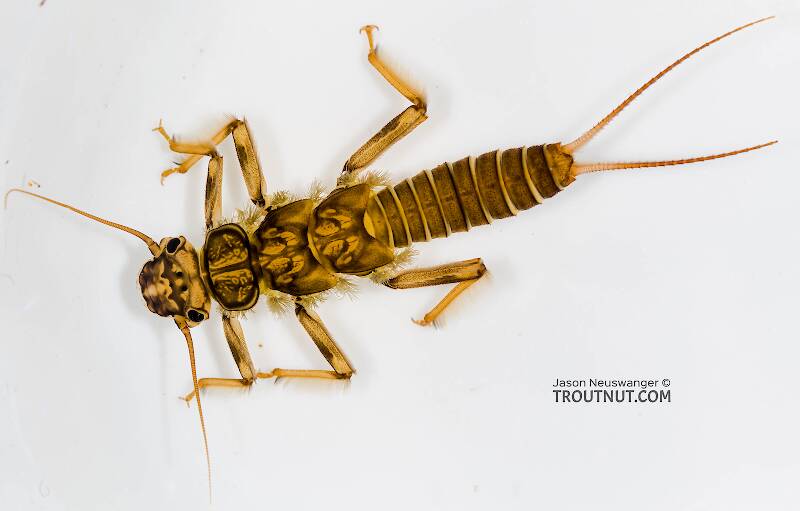
Hex Mayflies
Hexagenia limbata
The famous nocturnal Hex hatch of the Midwest (and a few other lucky locations) stirs to the surface mythically large brown trout that only touch streamers for the rest of the year.
Featured on the forum

Troutnut is a project started in 2003 by salmonid ecologist Jason "Troutnut" Neuswanger to help anglers and
fly tyers unabashedly embrace the entomological side of the sport. Learn more about Troutnut or
support the project for an enhanced experience here.
Caddisfly Genus Oxyethira (Cream and Brown Microcaddisflies)
Every stage of this widespread, tiny but abundant genus may be important.
Genus Range
Larva & pupa biology
Current speed: Still or slow
Substrate: Vegetation
Discussions of Oxyethira
Start a Discussion of Oxyethira
References
- LaFontaine, Gary. 1981. Caddisflies. The Lyons Press.
- Swisher, Doug and Carl Richards. 2000. Selective Trout. The Lyons Press.
Caddisfly Genus Oxyethira (Cream and Brown Microcaddisflies)
Taxonomy
36 species (Oxyethira abacatia, Oxyethira aculea, Oxyethira aeola, Oxyethira allagashensis, Oxyethira anabola, Oxyethira araya, Oxyethira arizona, Oxyethira coerceus, Oxyethira dualis, Oxyethira dunbartonensis, Oxyethira ecornuta, Oxyethira elerobi, Oxyethira florida, Oxyethira forcipata, Oxyethira glasa, Oxyethira grisea, Oxyethira itascae, Oxyethira janella, Oxyethira kelleyi, Oxyethira kingi, Oxyethira lumipollex, Oxyethira lumosa, Oxyethira maya, Oxyethira mirabilis, Oxyethira novasota, Oxyethira obtatus, Oxyethira parce, Oxyethira rivicola, Oxyethira roberti, Oxyethira rossi, Oxyethira savanniensis, Oxyethira setosa, Oxyethira sida, Oxyethira sininsigne, Oxyethira verna, and Oxyethira zeronia) aren't included.


